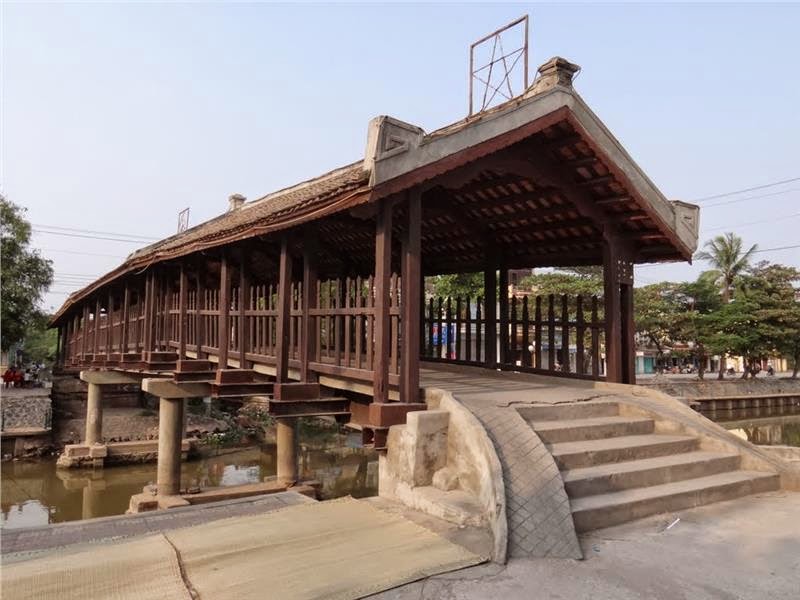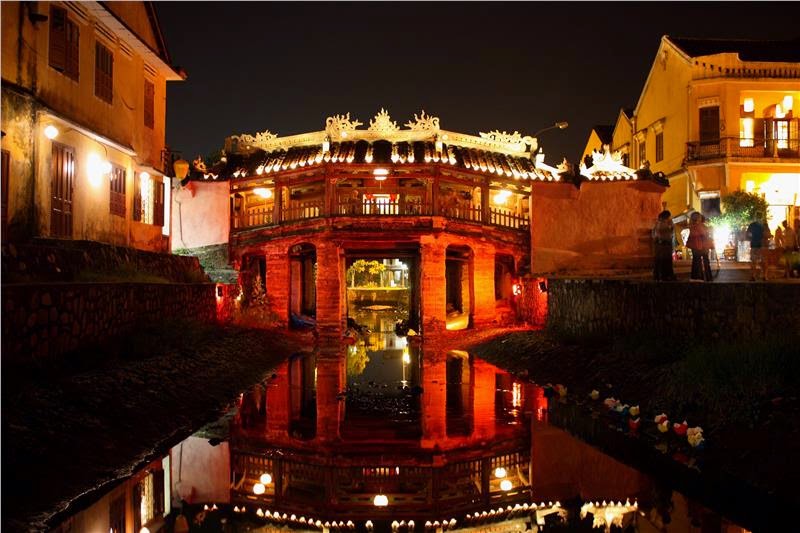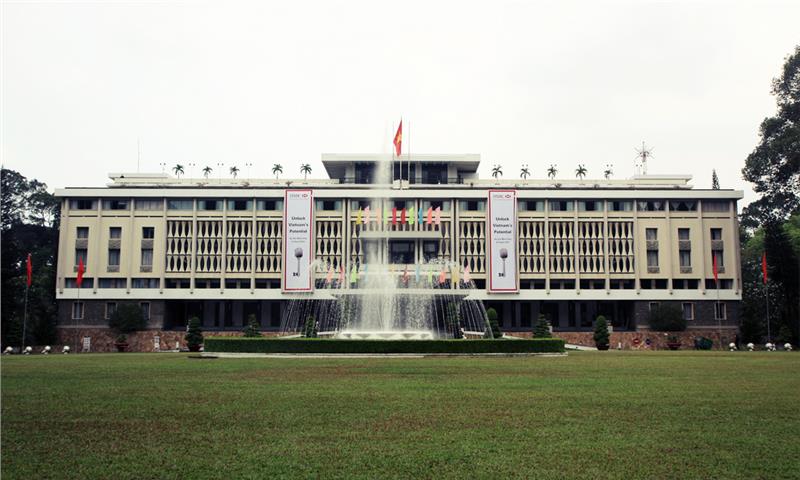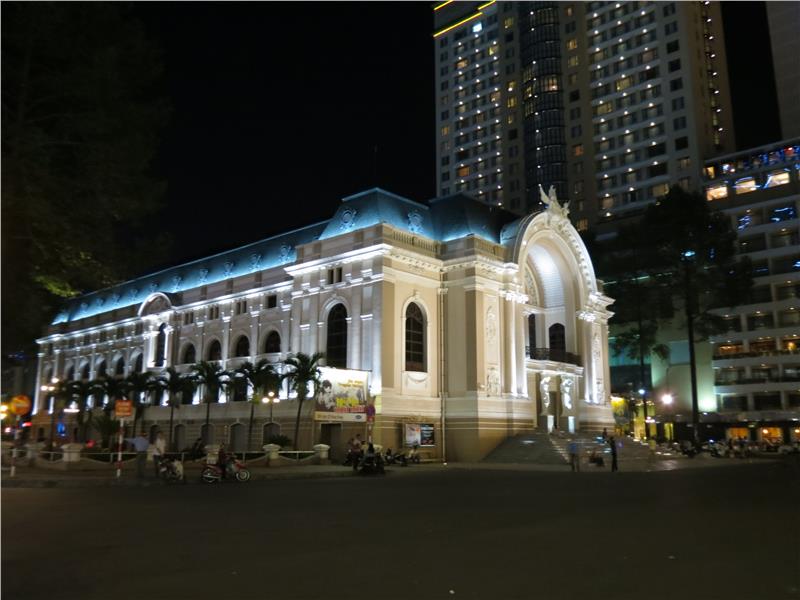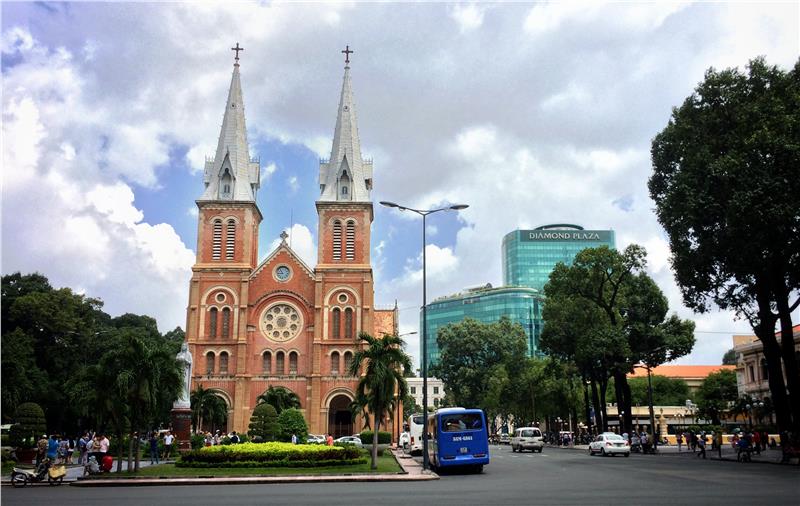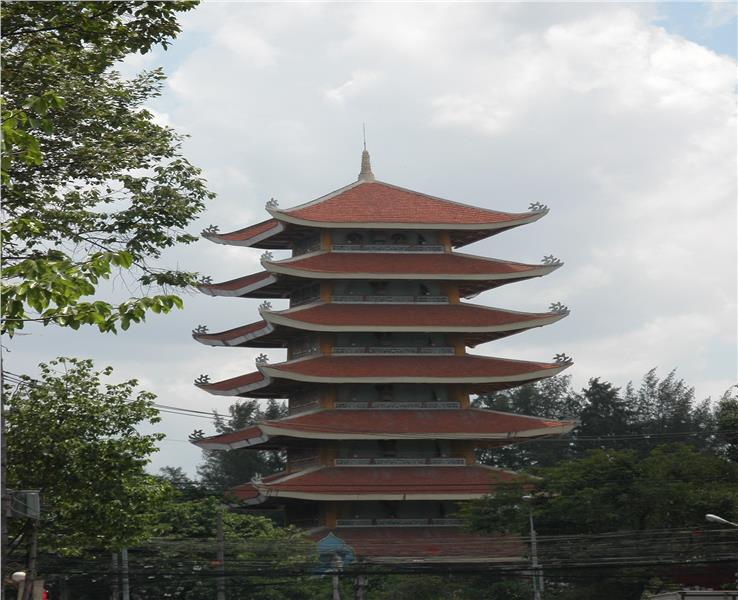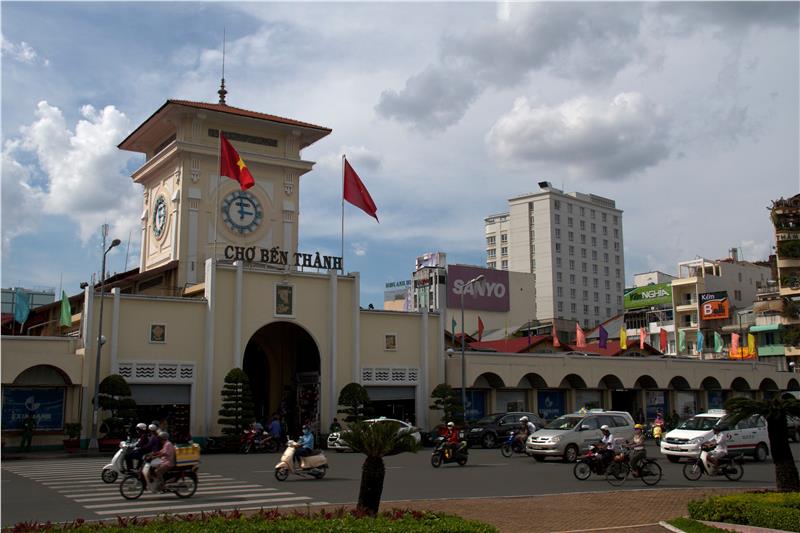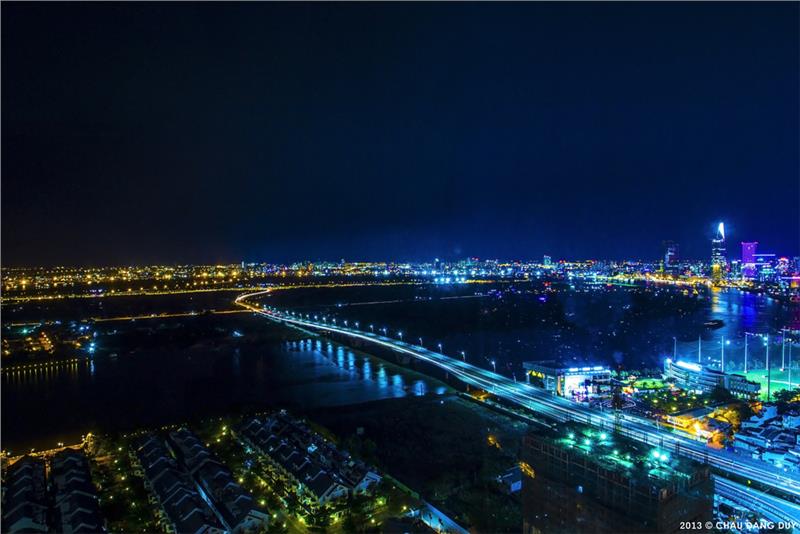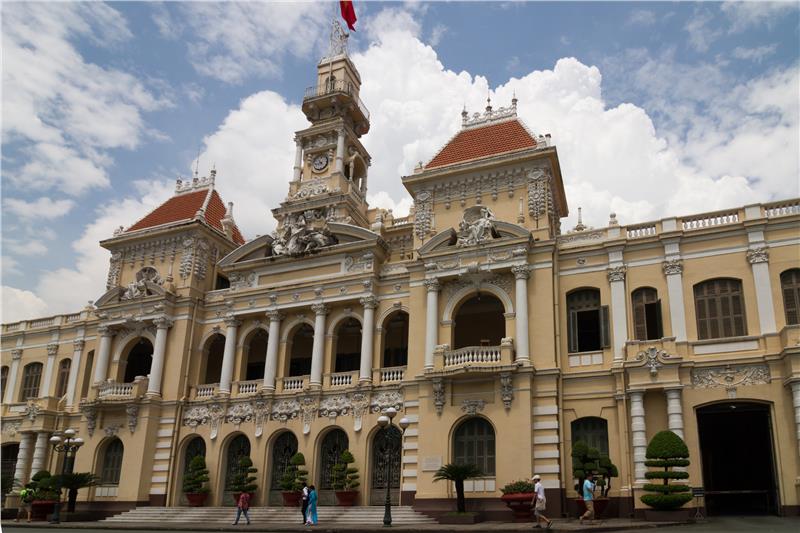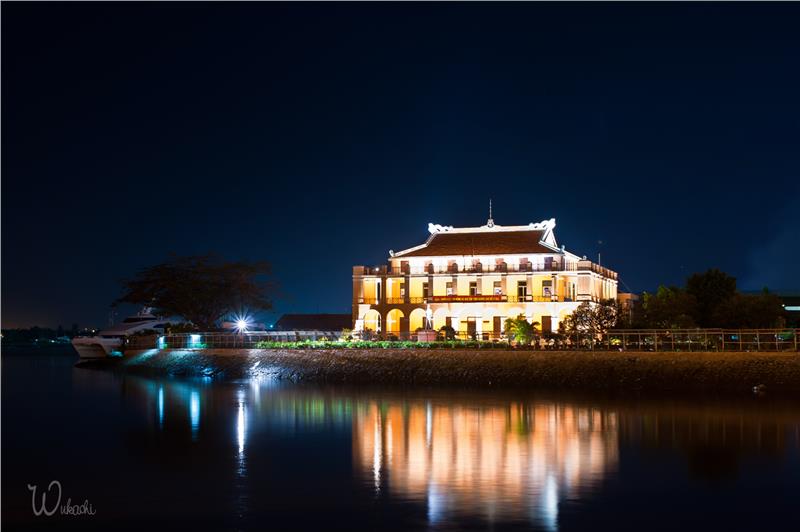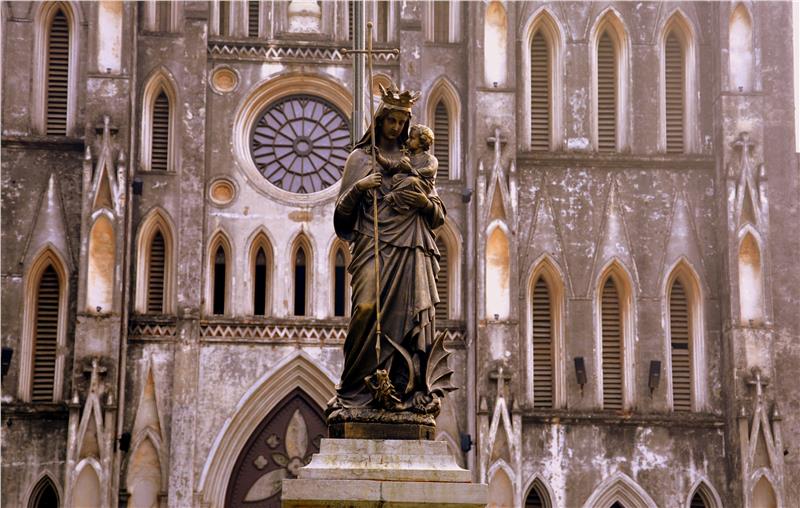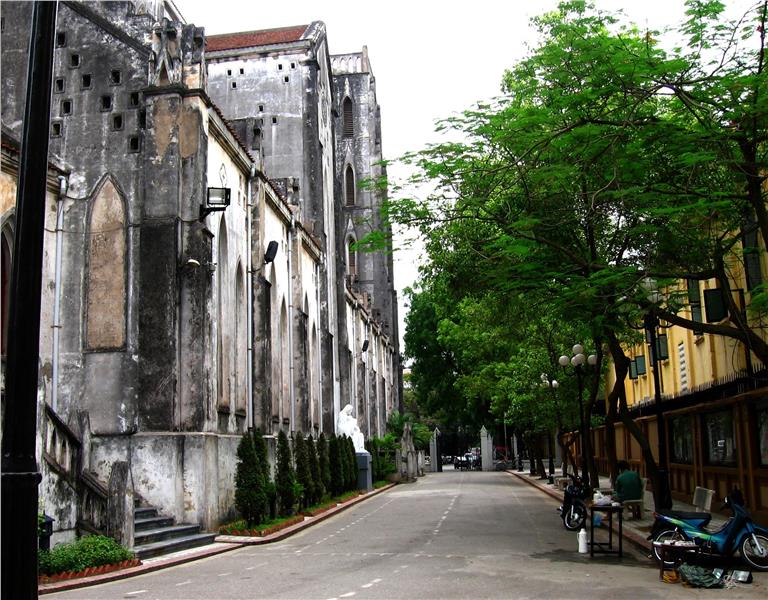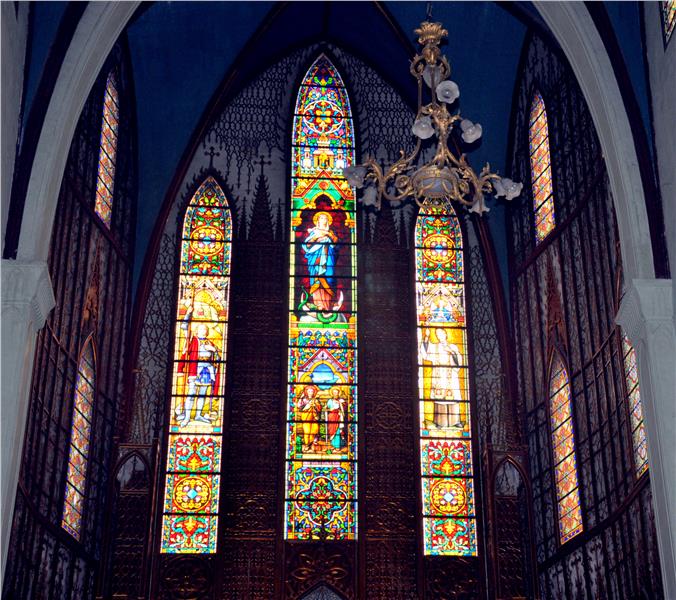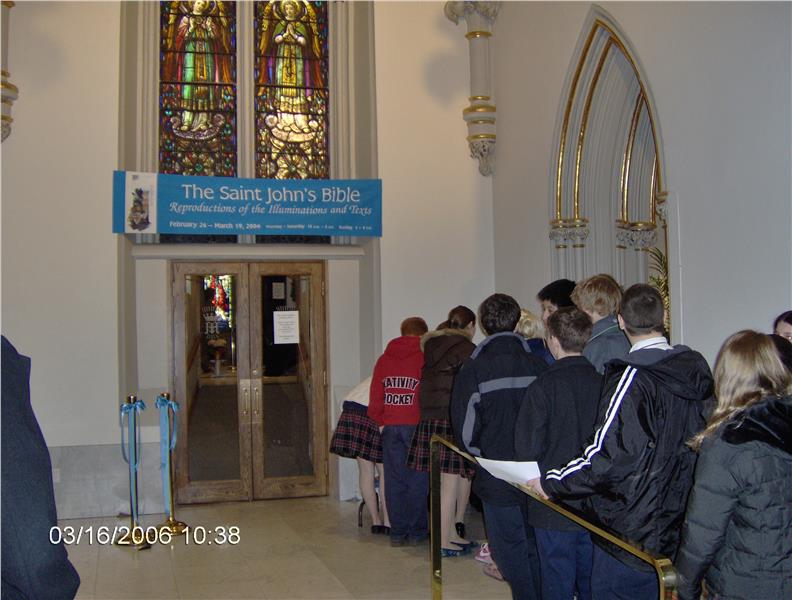Sapa has long been renowned as one of the most attractive holiday destinations in Vietnam tourism. It is currently one of the rendezvous a great number of domestic and international tourists are seeking to explore, admire the amazing beauty of the nature. Sapa is a peaceful land but hides many wonders the Creator favorably bestowed. The mountains and hills endlessly stretching in the mist, deep valleys, the winding mountain passes, the golden terraced fields in the ripe season, the dazzling orchid and peach gardens will certainly attractive enough for tourists to explore the misty city. Sapa is the convergence of the fascinating natural scenery and peaceful life.
Setting foot on Ham Rong Mountain admiring "roof of
Indochina" - wonderful feelings
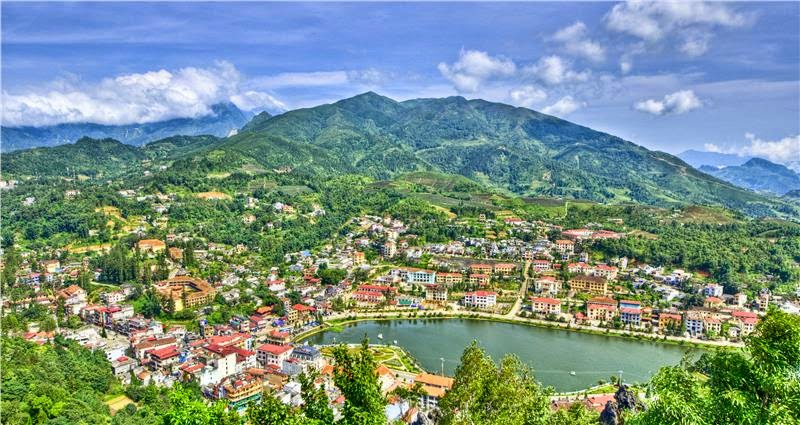 |
| the top of Nui Ham Rong |
Going to SaPa in any Vietnam tour packages,
tourists should not miss to visit Ham Rong Mountain tourist area - the scenic
sight behind the ancient Stone Church. Here, tourists will have the opportunity
to visit an orchid garden with nearly hundred specimens of orchids in Sapa
successfully grown on the tourist area. Tourists will be also admire the
panoramic view of Sapa tourist area floating in white clouds or contemplate the
spectacular beauty of Fansipan Mountain, which is dubbed as the "roof of
Indochina". Domestic tourists will find many exotic beautiful flowers of
the temperate countries grown in the Europe garden on Ham Rong Mountain. In
particular, the giant "SAPA" highlight created from the fresh flower
pots attracts the large number of tourists to take photograph and film. Ham
Rong Mountain is worth one of indispensable tourist sites in the journey of
conquering Sapatour attracting tourists. San May, the highest point of Ham Rong tourist
area (about 2,000 meters high above sea level), is the must-see tourist
attraction alluring youth tourists when participating in Sapa travel. Here, tourists
will much more clearly recognize the stunning beauty of the mountain that the
Creator endowed Ham Rong millions of years ago. That perhaps is the reason why
a large number of artists and tourists call it "Halong on land of
Sapa". Looking down from Chan May, tourists will have a chance to admire
the wonderful panorama of whole town in sight. The scenery appears as the
Penglai land. Discovering Ham Rong Mountain is definitely one of the most
unforgettable thingsto do in Sapa.
Admiring Hoang Lien National Park - ASEAN heritage garden
 |
| Hoang Lien National Park |
Hoang
Lien National Park (Sapa) has been recognized as ASEAN heritage garden by
Association of South East Asian Nations thanks to the particular values of the
garden in the relationships with other countries in the region. Located in the
Hoang Lien mountain range, Sapa ASEAN heritage garden retains an area of about
30,000 hectares. The mountain range is the extension of Ai Lao Shan Mountain
(in China) which is derived from the famous Himalayan Mountain Range over the
world. Hoang Lien Mountain Range is home to many peaks over 1,000 meters
including Fansipan peak, the highest peak in Vietnam and Indochina (3143
meters). It deserves one of the indispensable tourist addresses in the journey
of discovering Vietnamtours to charming Sapa attracting
the great number of both domestic and international tourists. Hoang Lien is the
convergence of the 2 climate sub-regions, namely temperate climate and subtropical
climate. Therefore, ASEAN Hoang Lien heritage garden is identified as one of
centers retaining the biological diversity most in Vietnam. The garden is home
to 2,024 species under 771 genera, 200 families of plants including 113 species
of especially rare listed in Vietnam Red Book and World Red Book. Especially,
the garden houses species of plant appearing only in ASEAN heritage garden such
as Himalayan cypress, Calocedrus macrolepis, northern red pine, Fansipan Picea,
Assam Cycas... Discovering Hoang Lien National Park surely gives tourists
unforgettable experiences. The national park is also considered as the center
of Rhododendron (Do Quyen) flowers of northwest mountainous region with more
than 30 different species including rare species. Especially, on the way to the
top of Fansipan peak, tourists will find it easy to catch rhododendron
flowering forests hundreds of hectares wide with the great number of ancient
rhododendrons. In particular, when the spring comes, the flowers blooming
create brilliant Hoang Lien Mountainous region. The most enjoyable feelings of
comfortably taking a stroll in the garden all day to admire trees in the forest
hundreds of years old on the altitude of more than 2000 meters as beautiful as
on the film will be actually unforgettable.
Experiencing
O Quy Ho Pass - Vietnam's highest pass
 |
| Sapa always a great destinaion |
O Quy
Ho Pass, also known as Hoang Lien Heaven Gate is located on the National
Highway 4D connecting Sapa tourist area with Binh Lu (Lai Chau). The pass owns
2,070 meters high above sea level and is regarded as the highest pass in
Vietnam retaining the road for cars. The peak of pass is the border of
administrative boundary between Lao Cai province and Lai Chau province.
Adjacent the position of former meteorological stations is a beautiful guest
house welcoming tourists from Sapa. O Quy Ho Pass has been the appealing
tourist Sapa attractions so far
alluring the great number of tourists, especially European tourists thanks to
the fascinating scenery of "Hoang Lien Heaven Gate". From the top of
the pass, tourists will have the opportunity to enjoy panoramic view of the
path running through the majestic forest to Binh Lu or Sapa. They also
contemplate glorious views of Fansipan peak from Lai Chau direction on sunny
days. On the foot of the pass towards Sapa is Thac Bac (Silver Waterfall), one
of the 10 most beautiful waterfalls in Lao Cai province strongly attracting
young people to explore. The beauty of O Quy Ho Pass has long been attracting
international tourists to admire; simultaneously, it is also the source of
creative expressions of many well-known Vietnamese artists. O Quy Ho Pass
deserves an indispensable tourist sight in the journey of exploring Sapa
travel. Sapa is always put on its particular charm throughout 4 seasons around
the year. It is paradise of blooming flowers in the warm spring looking like a
charming natural silk, is untouched rice terraces in the warmth of autumn, and
is hills covered with snow in the cold of winter or is the fresh and tranquil
atmosphere in the unique summer. Sapa is the home of many natural magics and
spectacular landscapes with terrain of mountains, hills and lush green forests,
which creates a beautiful picture in the harmony with the poetic and
fascinating nature in Northwest Vietnam. These unique tourists significantly
contribute to promote Sapa tourism in
particular and Vietnam
tourism in
general closer to tourists at home and internationally.
